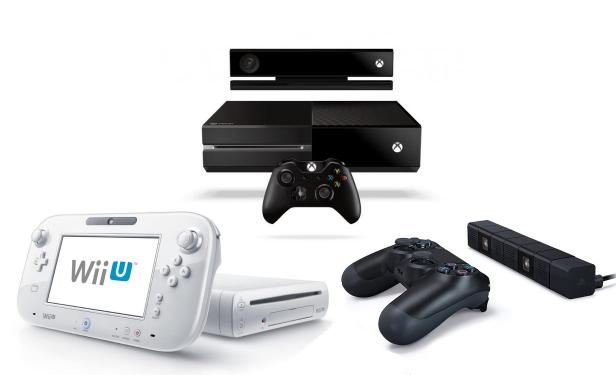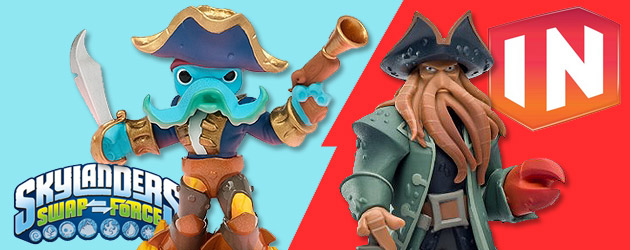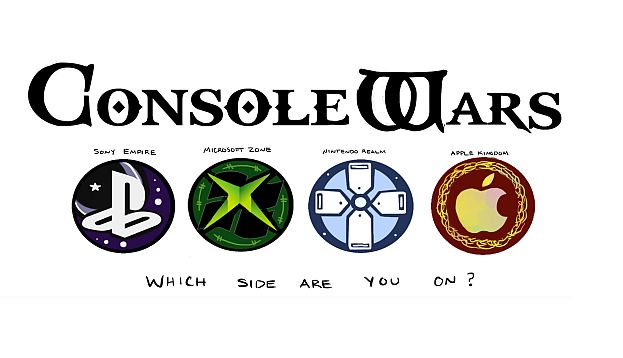The frenzied carnival atmosphere of E3 is fading into memory, and the calm of summer is descending on the game industry. Not really — it’s anything but calm in the marketing departments of game companies. Savvy marketers are sharpening their plans for the holidays, knowing that it’s going to be a brutally competitive season this year. Marketing budgets will be huge for major releases, the noise level will be extreme, and the traditional game industry will be competing for consumer dollars against other devices. Let’s take a closer look at some of the factors involved.
Imagine a family with one or two kids, looking to spend perhaps a few hundred dollars at Christmas for a major entertainment device. They may look at consoles, and the range of options will be dizzying: the Wii, the Wii U, Xbox 360 in several versions, the Xbox One, the PS3, PS4, the 3DS, the PS Vita. Prices will range from $99 up to $499, and there may be multiple different bundle packages for the holiday as well. The choices don’t stop there: There’s also the Ouya for $99 at most of the same retail outlets, the GameStick, and the Gamepop, all Android-based consoles for low prices.
We may also see a Google console, a revamped Apple TV with and App Store, and Amazon with a Kindle TV console box, all probably around $99. That’s not all — families will be bombarded with ads for tablets, with a bewildering array of features, screen sizes and prices ranging from $99 all the way up to $999, stopping at every major point in-between. You can bet all of those tablets will be pushing their game-playing ability and how it’s the ideal electronic gift for the whole family to enjoy.
Hardware marketers will be trying to explain the distinctive benefits of each individual product in their line, while trying to keep consumers from spending all of their money on a tablet. It’s going to be a very difficult task indeed. This will all be taking place while all of the leading game franchises will be launching new editions, and trying to explain why you should buy the current-console version even though the next-gen console version looks so much better. Really, they’re both great. What exactly is the difference again

The marketing conflicts will take place on several battlefields. At retail stores in September, massive displays for GTA V will be dominating the space. By October, we should be seeing the retail strategy unfolding for new game hardware and key software titles. Precise availability dates haven’t been announced for new consoles, but it’s absolutely certain that both the PS4 and the Xbox One will be available in quantity prior to Thanksgiving weekend, the biggest shopping period in the USA. The consoles may well arrive weeks before that time, maybe even a month ahead . . . but they will be in stores for Black Friday.
For new consoles, retail kiosks where consumers can try out machines are usually seen as a critical part of the strategy. Where those kiosks are placed, what games are on them and how widely distributed they are will be an indication of how serious Microsoft, Sony and Nintendo are about marketing new consoles. Nintendo in particular should be looking to get people experiencing new Wii U software for themselves, especially after seeing the response to the Best Buy test Nintendo conducted during the week of E3.
Other battlefields will be TV advertising, social media, online and print advertising. Traditionally, new consoles have been introduced with a bombardment of television ads to reach a broad demographic. This time, many of the younger consumers are spending far more time online than watching TV, so marketers will have to get more creative to reach them. Sony’s Guy Longworth hinted that the company will be using social media more strongly than ever before this year. Print advertising will probably end up the loser in the shifting marketing budgets, though Game Informer will still see its share of ads.
Let’s not neglect the massive battles that will be occurring between rival game titles this holiday. Activision has already declared an increased marketing spend for its key titles this Christmas in order to fend off competition. The war between Call of Duty: Ghosts and Battlefield 4 will be huge. In particular, watch the retail spaces to see who dominates end caps, whose standups have more impact, and which title gets strong licensing support from peripherals manufacturers.

Another battle to watch will be between Skylanders and Disney Infinity, competing for the kid’s market with toy/game crossovers. Activision has had a huge shelf presence at key retailers like Toys R Us for Skylanders. Will Disney spend what it takes to get a similar impact at big chain stores Skylanders has an advantage in the sheer number of products, if you count all the older versions of the toys. This will be a fascinating marketing struggle to watch as it unfolds at retail stores.
It’s one thing to see which marketing effort is better funded, and it’s entirely another to see which product sells more. We probably won’t know much about relative sales of competing products until after the new year begins. Winners will be proudly proclaiming numbers early and often; second and third place products will be looking for other metrics to tout rather than sheer sales numbers. Remember, when the marketing dust settles, it’s sales and profits that ultimately determine the winners.

